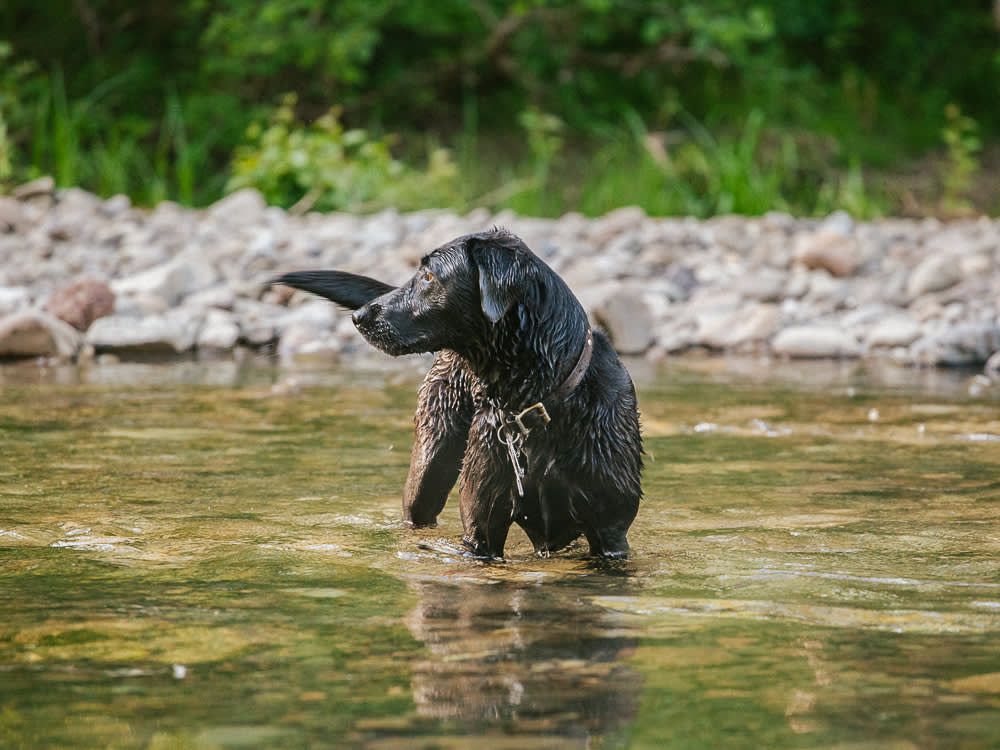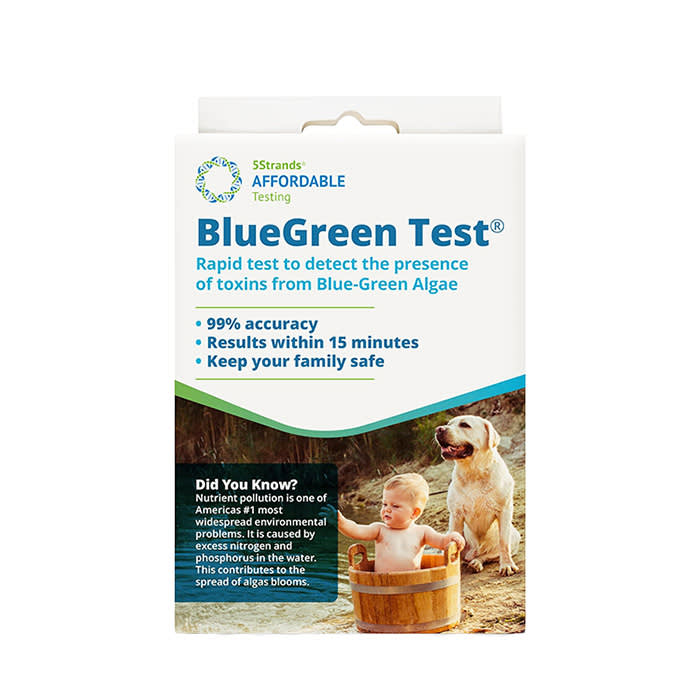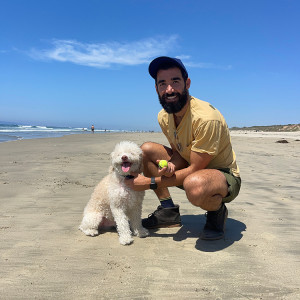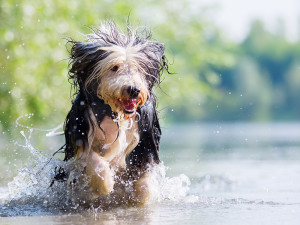Why Your Dog Should Stay Far, Far Away From Blue-Green Algae This Summer
Consider getting a water-testing kit to keep your pup safe.

Share Article
Every year when the weather warms up, stories about the dangers of blue-green algae for dogs begin to pop up in the news. This spring and summer, sightings of the toxic bacteria have already been reported in Colorado,opens in new tab Florida,opens in new tab Rhode Island,opens in new tab Kansasopens in new tab, Minnesota,opens in new tab and more states across the country. And it can cause serious harm to pups. Just last week, a dog tragically died opens in new tab 45 minutes after taking a swim in a lake where blue-green algae had accumulated.
Most algae are harmless, but some species of blue-green algae produce toxins that can be fatal to a dog within minutes. Dogs who survive may develop health issues, such as chronic liver disease and possibly even tumors — problems that may go undetected until they’re severe.
Researchers suspect many deaths are missed because people don’t even know their dog was exposed to blue-green algae. Veterinarians may not recognize the symptoms, and tests to detect the toxin can be complex and costly. (Blue-green algae can be harmful to humans, too, but deaths are rare.)
In recent years, cases of blue-green algae poisoning in dogs have surged because nutrients like phosphorous and nitrogen get washed into waterways from agriculture, lawns, and other sources. Climate change also plays a role. Below, learn how to keep your dog safe from blue-green algae this summer.

How to spot blue-green algae
Blue-green algae (also known as cyanobacteria) can thrive in a variety of different terrains, as long as there are warm, nutrient-rich waters present. There are several ways to differentiate toxic blue-green algae from harmless green, brown, and other kinds of algae.
For starters, the color isn’t always blue-green. The algae can also be reddish-purple or brown and other hues. Algae is typically equally distributed throughout the water, but blue-green algae produces large blooms that are often concentrated along the water’s edge; it might look like slimy paint. These can still taint the water after it looks clear. Blooms may last for a week, and their toxins may last three weeks.
When blue-green algae isn’t floating visibly on the surface, it may still lurk below, moving up and down with available light and nutrients. At night, it often floats to the top, forming a scum. Wind and waves then concentrate toxic blooms in shallow areas or at the water’s edge — right where dogs like to wade, splash, or drink. The water doesn’t taste bad, so dogs will lap it up. Some adventurous pups even like to gobble down dried algae mats.
How to protect your dog from blue-green algae
The Environmental Protection Agency (EPA) recommendsopens in new tab that all visits with dogs to rivers, streams, and lakes should include an algae check. Dogs shouldn’t drink, wade, or swim in water that smells bad, is discolored, or contains mats of algae, foam, or scum. If your dog does get into scummy water, immediately rinse them off with tap water (the toxins can also be absorbed through a dog’s skin); ensure that they don’t lick algae from their fur. If your pup shows signs of poisoning, take them to your vet as soon as possible.
Here are the signs of blue-green algae poisoning to look out for:
Finally, be sure to report any blue-algae incidents to your state’s public health departmentopens in new tab to prevent other dogs from getting sick. You can also buy a testing kit to test the water you or your dog plan to swim in. Shop one option below.
References
Sheila Pell
Sheila Pell is a freelance journalist who frequently writes about environmental issues. Her work has appeared in The Washington Post, Modern Farmer, San Diego Reader, The Bark, and American Forests. She lives in northern California with her husband and two large dogs.
Related articles
![Shepherd dog playing with yellow ball at the beach]()
How to Keep Your Dog Safe at the Beach This Summer
5 tips to help your pup have fun in the sun — safely.
![Girlfriends lounging by pool in summer with large white dog.]()
Making a Splash: How to Throw an Epic Dog Pool Party for Dogs
Here’s some advice on what you can do to make yours the best in the neighborhood.
![A dog with its head sticking out the window of a moving car.]()
How to Plan a Dreamy Summer Road Trip With Your Dog
They are your favorite person anyway—why not plan the perfect vacation with them?
![Dave Coast with his small white dog on a beach]()
Dave Coast’s 5 Favorite Dog-Friendly SoCal Beaches
The wellness expert shares his favorite spots for seaside strolls with his dog.
![Bearded Collie running in a lake]()
When Drinking Too Much Water Is Deadly
How to keep your swim fan safe.
![a dog in a dog pool]()
The Best Dog Pools For Your Dog to Splash Around in This Summer
It’s summer fun time, baby.






